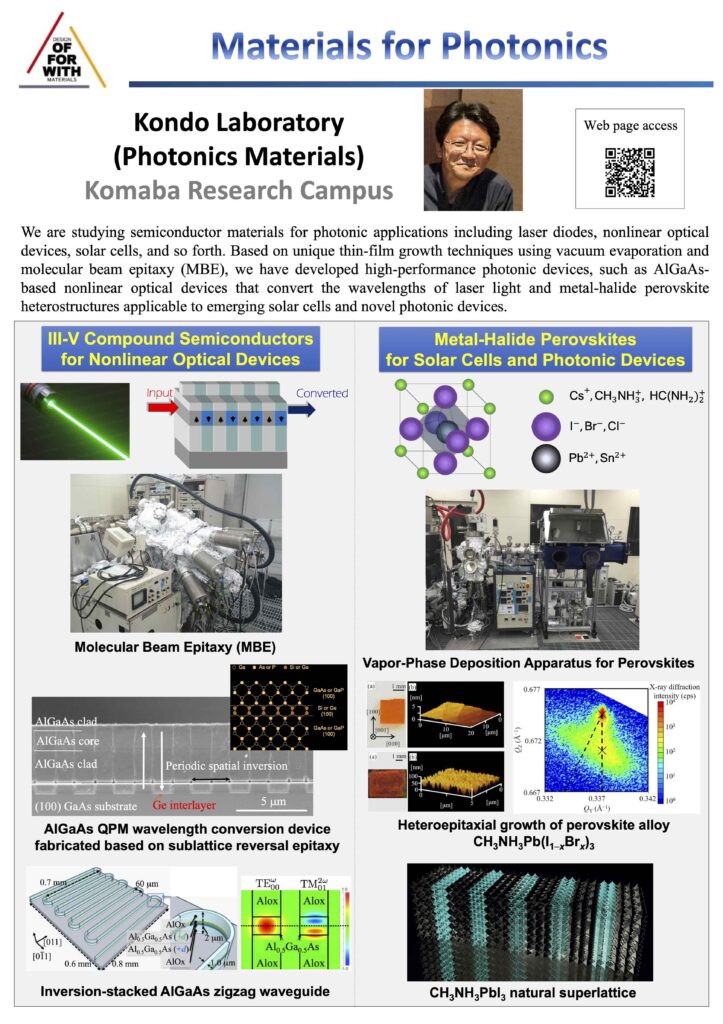Takashi KondoProfessor

- Telephone
- +81-3-5452-5329
- FAX
- +81-3-5452-5329
- tkondo[at]castle.t.u-tokyo.ac.jp
* In your correspondence, please replace [at] with "@" in the above email address.
- Research Field
- compound semiconductors, nonlinear optical materials, semiconductor laser diode, molecular beam expitaxy, perovskite solar cells
Research
We are studying compound semiconductors for photonic applications including laser diodes, nonlinear optical devices, solar cells, and so forth. Based on unique thin-film growth techniques using vacuum evaporation and molecular beam epitaxy (MBE), we have developed high-performance photonic devices, such as AlGaAs-based nonlinear optical devices that convert the wavelengths of laser light and metal-halide perovskite heterostructures potentially applicable novel light-emitting devices. We are now trying to integrate laser-oscillation functions to the semiconductor wavelength conversion devices which will lead to innovative applications such as information processing, high-resolution spectroscopies, and bio-sensing. We are now studying novel crystal growth and composition/conduction control techniques of metal-halide perovskite semiconductors in order to realize high-efficiency thin film solar cells and high-performance photonic devices, as well.
Selected Publications
T. Matsushita, Y. Nakamura, and T. Kondo, “Design of zigzag folded inversion-stacked AlGaAs waveguides for ultra-compact wavelength converters,” Opt. Express, 25 (2017) 22829.
T.W. Kim, S. Uchida, T. Matsushita, L. Cojocaru, R. Jono, K. Kimura, D. Matsubara, M. Shirai, K. Ito, H. Matsumoto, T. Kondo, and H. Segawa, “Self-organized superlattice and phase coexistence inside thin film organometal halide perovskite,” Adv. Mater., 30 (2018) 1705230.
K. Kimura, Y. Nakamura, T. Matsushita, and T. Kondo, “Epitaxial CH3NH3Pb(Br1-xIx)3 thin films on CH3NH3PbBr3 single crystal substrates formed by physical vapor deposition,” Jpn. J. Appl. Phys. 58 (2019) SBBF04.

